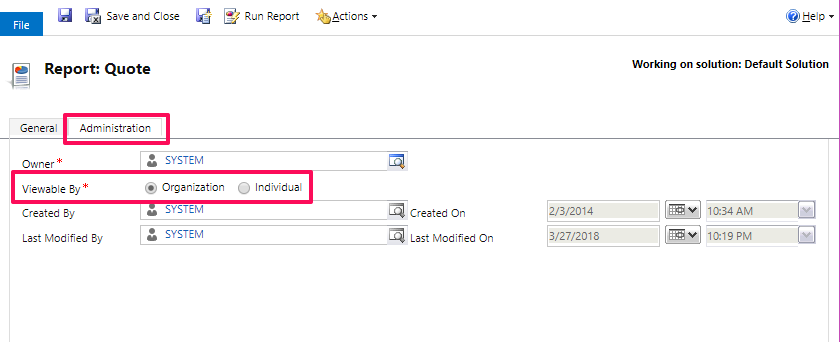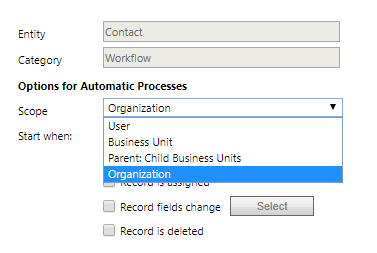You may have wondered what the difference is between the “Viewable By” settings for a report (“Individual” and “Organization”), or what the Workflow Scope really means, with options like “User”, “Organization”, and “Business Unit”. The answer is not quite as straightforward as you may think!
Reports
To open the report settings without running the report, select the report record in the list, then click “Edit” up top. These security settings can be found in any Report, under the Administration tab:

For Reports, this “Viewable By” section determines who can see the report, however “Individual” is something of a misnomer. While “Organization” does mean that anyone in the Organization can view that report, “Individual” means that access to that report depends on each users’ security roles. For example, if I belonged to Business Unit A and set the scope to “Individual”, any Business Unit A user with Read privileges to Reports for their business unit would be able to view the report, but someone with the same privileges in Business Unit B would not.
Workflows

For Workflows, the “Scope” limits the records that the workflow can be run on. For example, if the Scope is set to “User”, the workflow will only run on records owned by the user triggering the workflow. If it’s set to “Organization”, the workflow can run on records owned by any user in Dynamics. Please note that the scope cannot be changed once set! Other options include “Business Unit” and “Parent: Child Business Unit”, both referring to the records the workflow will run on, in reference to the person triggering the workflow.

